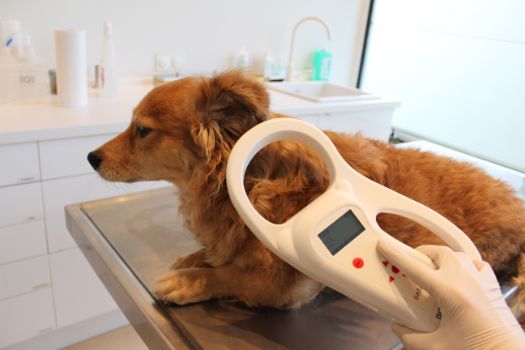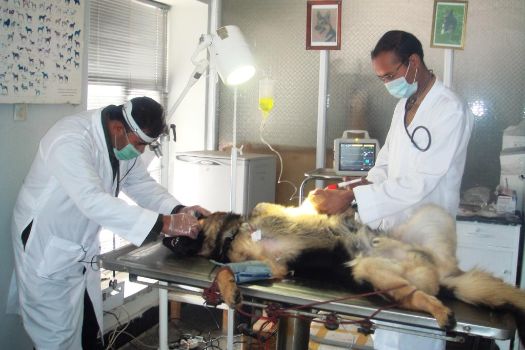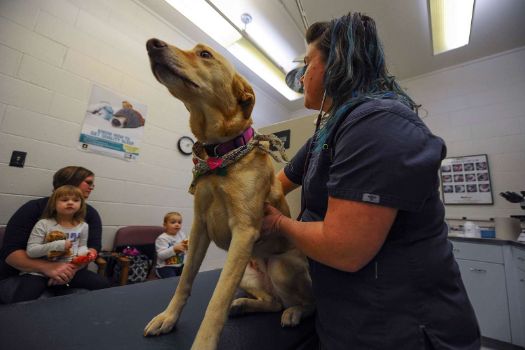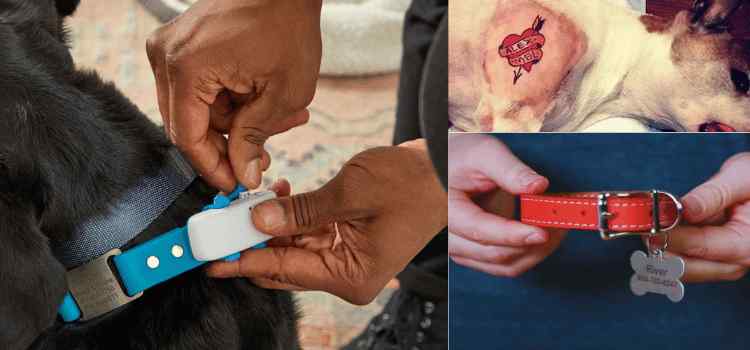The cost to microchip a dog can vary based on your location, the clinic you choose, and whether or not the procedure is part of a package deal with other veterinary services. On average, microchipping a dog typically costs between $25 and $75. This is a one-time fee, as microchips do not require replacement or ongoing fees after the initial implantation and registration.

Factors That Affect Dog Microchipping Cost
Location
The cost of living and demand for veterinary services in your area can influence the price of dog microchipping. In metropolitan areas where the cost of living is high, you may expect to pay more for the service compared to smaller towns or rural areas.
Vet or Non-Profit Animal Clinic
Veterinary offices may charge more for microchipping due to their overhead costs and because they often bundle the service with other treatments. On the other hand, non-profit animal clinics or shelters may offer microchipping at a lower cost or even for free as part of their mission to keep pets safe.

Chip Registration
Once the microchip is implanted, it needs to be registered with your contact information in a database. Some vet clinics may include the registration cost in their fee, while others might not. If it’s not included, you can register the chip online, typically for $15-$20. Some databases may charge an additional fee for updates or changes to the registration information. If you let your vet clinic handle the registration, the overall cost might be higher, but it can be more convenient.
How is a Microchip Implanted, and how it Works?
A microchip is implanted in a dog using a hypodermic needle, similar to the one used for giving vaccinations. The microchip, about the size of a grain of rice, is typically implanted under the skin at the back of the dog’s neck between the shoulder blades. The procedure is quick, usually taking just a few seconds, and most dogs tolerate it well, similar to a standard vaccine injection.
The microchip itself contains a unique identification number. It’s a passive device and does not have a power source. Instead, it activates when a scanner sends a low-power radio signal to the chip. The chip responds to the signal by transmitting the unique ID number to the scanner.
If a dog gets lost and is found, a vet clinic, animal shelter, or other agency can scan the dog for the microchip. The scanner reads the unique ID number, and the agency can then contact the microchip registry to get the owner’s contact information. Thus, it’s crucial that the microchip is registered and the contact information kept up-to-date to ensure a lost dog can be returned home.

What’s Included in Microchipping Cost?
The cost of microchipping usually includes the microchip itself and the implantation procedure. The microchip is a small device that contains a unique identification number. The procedure is carried out by a professional (veterinarian or trained technician) and involves using a syringe to implant the microchip subcutaneously, usually between the dog’s shoulder blades.
What’s Not Included in Microchipping Cost?
The cost of registering the microchip is often not included in the initial microchipping fee. After the microchip is implanted, it’s crucial to register it with a national pet recovery database. This involves paying a separate fee ranging from $15 to $20. Additionally, any updates to your contact information in the registry, if not free, might incur additional costs.

Benefits of Installing a Microchip in Your Dog
- Permanent Identification: Microchips provide a secure and unalterable way of identifying your pet. Unlike collars or tags that can be lost or removed, a microchip is a permanent form of identification that stays with your pet for life.
- Increased Chance of Reunion: If your dog gets lost, a microchip increases the chances of a happy reunion. Shelters and vet clinics routinely scan found pets for microchips, allowing them to quickly identify the owner.
- Proof of Ownership: In disputes over pet ownership, a registered microchip can serve as legal proof that you are the rightful owner of your pet.
Alternatives to Microchip Devices for Dogs
- Collars and ID Tags: These are the simplest and most visible means of identifying your pet. The tag should include the dog’s name and the owner’s contact information. However, they can get lost or removed.
- Tattoos: Some owners choose to tattoo an identification number on their pet. Tattoos can be a visible way of marking an animal, but they can fade over time, and placement can be tricky to ensure visibility.
- GPS Trackers: These devices can be attached to your pet’s collar and allow real-time tracking of your pet’s location. However, they require a power source, often need to be charged or have batteries replaced, and can be more expensive than microchips.

Frequently Asked Questions
Is it painful to microchip a dog?
The microchip implantation process is quick and causes minimal discomfort. It’s akin to a routine vaccination injection. While some dogs might feel brief discomfort, most don’t react significantly to the procedure.
What’s the right age to get your dog microchipped?
Puppies can be microchipped as early as 6-8 weeks old. However, many veterinarians recommend microchipping at the same time as spaying or neutering, typically around 6 months of age. Still, dogs of any age can safely receive a microchip.
Does a dog need a microchip if it already has a collar or tag?
Yes, it’s advisable. Collars and tags can fall off, be removed, or become unreadable over time, while a microchip provides a permanent form of identification. A microchip is a valuable backup if your dog loses its collar or tag.
How much does it cost to microchip a cat?
The cost to microchip a cat is similar to that of a dog, typically ranging from $25 to $75. This price can vary based on location, veterinary clinic, and whether the procedure is part of a package of services.
Do microchips track the location of my dog?
Microchips are not GPS devices and cannot track your dog’s location. They simply contain a unique identification number that a scanner can read. For real-time tracking, a GPS collar would be required.
Does pet insurance cover the microchipping cost for my dog?
Some pet insurance policies may cover the cost of microchipping as part of their wellness plans, but this isn’t universally the case. It’s important to check the details of your specific insurance policy to determine if this procedure is covered.
Is it required by law to microchip a dog?
It depends on where you live. Hawaii became the first state in 2021 to mandate that owners microchip their pets. Only 12 states and the District of Columbia require animal shelters and animal control systems to scan for a microchip.